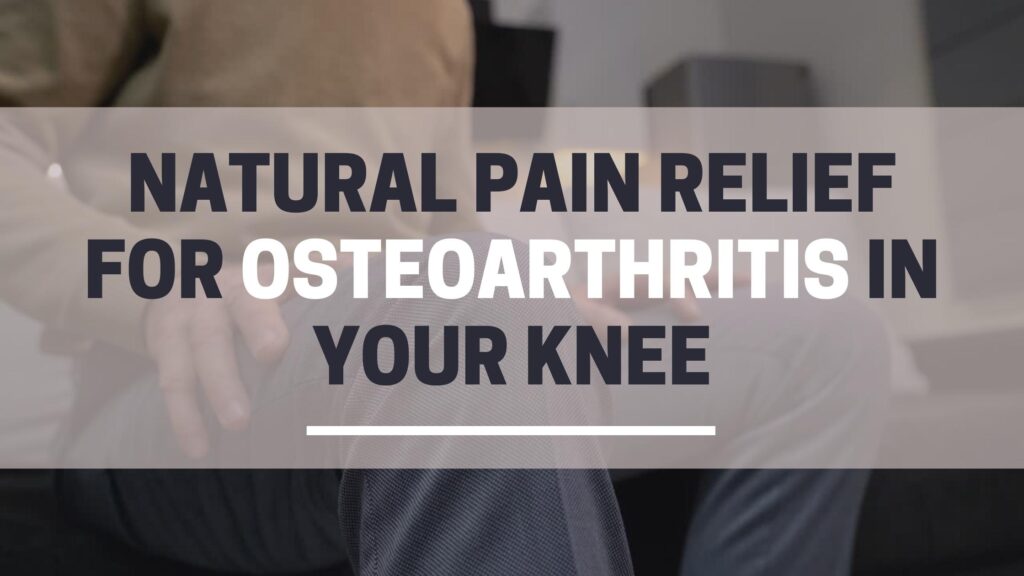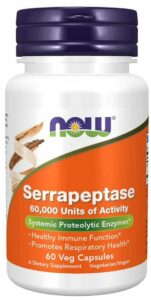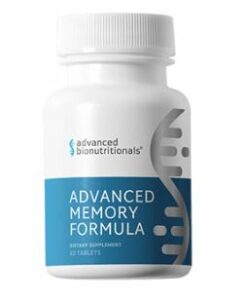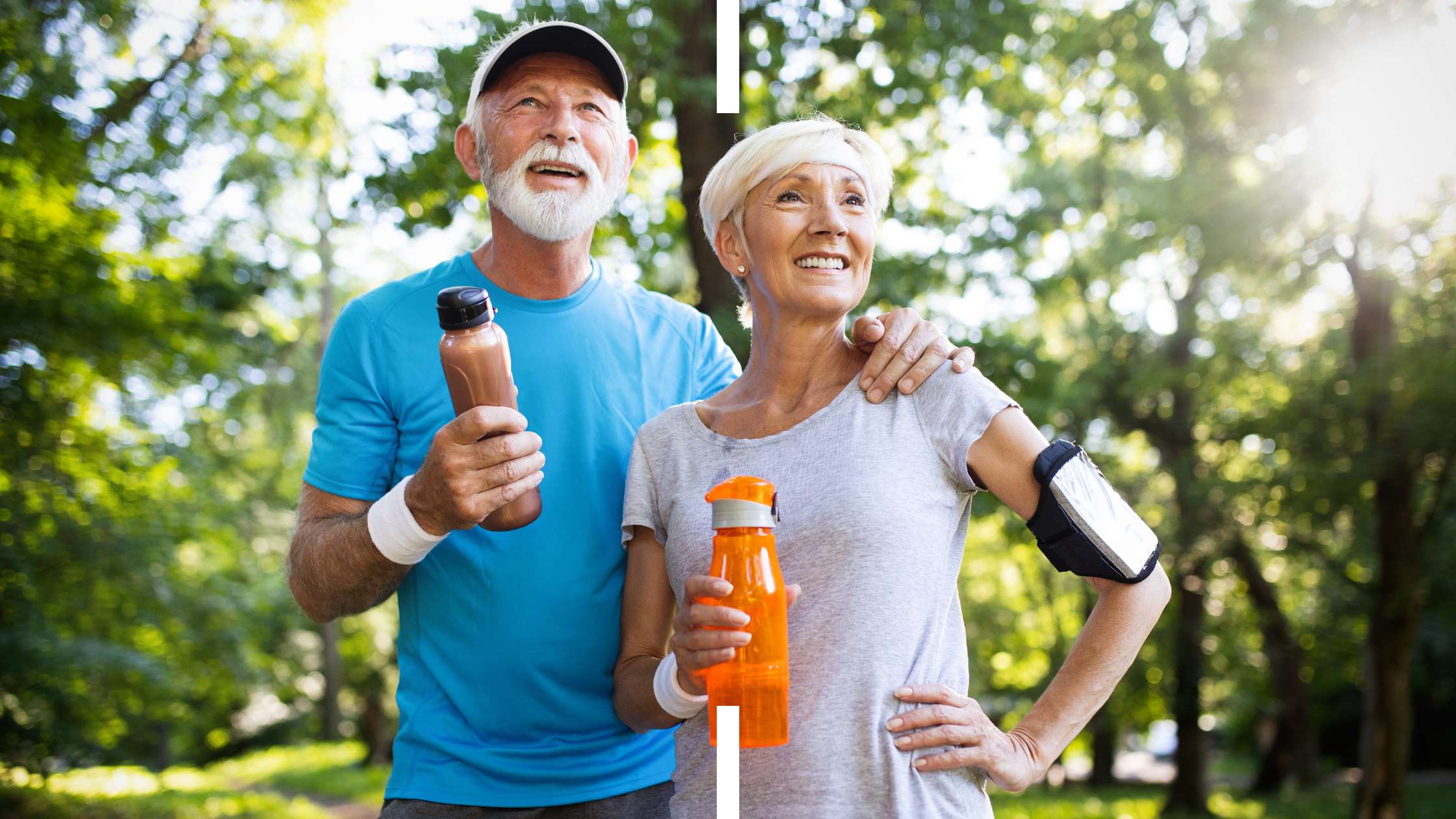Natural pain relief for osteoarthritis in your knee
Imagine being able to ride a bike or go for a walk without arthritic pain in the knees, it probably feels like a better idea not to ride a bike or go for the walk, but what if you found natural pain relief for osteoarthritis of the knee?
Japanese study
According to a Japanese study of a well-known proteolytic enzyme Serrapeptase, the researchers found that when Serrapeptase was compared to several other enzymes as a potential anti-inflammatory it was head and shoulders above the rest in terms of its effectiveness in reducing swelling and pain Serrapeptase or Serrati peptidase is being used in clinical settings for the past 32 years throughout Japan and Europe.
Serrapeptase can help reduce pain and swelling caused by arthritis without the dreaded side effects of drugs. I’m not saying Serrapeptase has no side effects, but they are few and far between, does Serrapeptase work for everyone? It does for most people that follow the correct dosage. (more later)
Where causes osteoarthritis of the knee?
There are many reasons for Osteoarthritis of the knee such as:
- As we age especially over the 40 mark the muscles and joints become weaker, and any damage or inflammation takes so much longer to heal.
- Knee osteoarthritis is more common in women
- Weight gain or being overweight can affect the pressure on your knees
- A former injury to the knee such as a torn meniscus can lead to arthritis
- If you work in a physically demanding job where you use your knees a lot or you take part in a sport with the repetitive movement of the knees.
- A knee operation (a meniscectomy) to remove damaged cartilage or perhaps a repair to the cruciate ligaments can cause arthritis.
- You may have rheumatoid arthritis or gout.
When you have knee arthritis the surface of the knee may become damaged and will affect its movement, the cartilage that is over the main surface and underneath the knee starts to become rough and thin.
This causes a reaction from the bone as it thickens and broadens, the joint tissues react to this by becoming more active than usual as your body tries to repair the damage. Bone spurs known as osteophytes form as the bone on the edge of the joint grows out, extra fluid is produced as the synovium starts to swell causing the joint to enlarge (effusion or water on the knee)
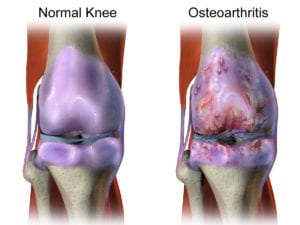
Osteoarthritis image
Osteoarthritis of the knee symptoms
The primary symptoms are:
- Sharp pain especially when you are moving the knee, it may feel worse at the end of a day’s work
- You feel stiffness in the knee noticeably after a rest, it may ease when you start to move again
- A condition is known as crepitus a sort of grinding, creaking, or crunching sensation when you move the knee joint
- Swelling caused by excessive fluid on the joint.
You may notice other symptoms such as:
- Your knee gives way due to the muscles becoming weak or the structure of the knee joint isn’t as stable as it was.
- Your knee becomes out of shape and bowed
- The muscles around the knee joint become thin.
- Your knee doesn’t move as easily or as far as it normally would.
Some people with severe osteoarthritis complain that their sleep is affected by the pain. Depending on the amount of activity the pain will usually vary in the sense of good days and bad days, you may also experience pain for no reason at all.
Damp weather or low pressure can affect some people making the stiffness and pain worse, perhaps caused by the nerve fiber in the knee capsule being sensitive to a change in the air pressure.

Osteoarthritis of the knee
Prognosis
Because osteoarthritis of the knee is unpredictable we don’t know how it will progress, it will vary from person to person. It can develop quickly and cause quite a bit of damage to the knee joints and may lead to a disability.
It is a slow progression that advances over the years leading to small changes in parts of the knee joint and causing pain.
The pain and swelling may reach a peak after a few years and the symptoms will stay the same or may lessen.
When you have severe osteoarthritis, the cartilage surrounding the knee wears out and is no longer able to cover the end of the bones. This causes friction as they rub against one another, in the end, they just wear away altering the shape of the knee joint and making the bones move from their normal location.
The knee becomes unstable as the muscles start to thin or waste away.
We always recommend getting regular exercise to reduce the risk of osteoarthritis of the knee from becoming worse, the exercise will help to protect the knee from getting worse, by keeping the weight down will help also.

Doctors advise image
Diagnosis
To get a diagnosis your doctor will examine your knee for:
- Swelling around the knee bone
- Restricted movement of the knee
- Crepitus
- Swelling of the bone
- Additional or excess fluid
- Diminished movement
- Unstable knee
- Knee muscle thinning
Treatments for arthritis of the knee
As far as we understand it there is no cure for osteoarthritis of the knee, however, there are several treatments that can help to alleviate the swelling and pain such as:
Painkillers
Will help with the pain and stiffness, however, they don’t affect the osteoarthritis itself nor will they repair the damage to the knee joint. This treatment is for occasional use when you are using the knee joint during walking or exercising. Paracetamol is the usual painkiller, make sure that you take the correct dosage (1 gram, normally 2 tablets) up to 3/4 times per day. So are you looking for Natural pain relief for osteoarthritis knee?
Painkillers such as cod Amol or co-dyrdramol have paracetamol plus a second codeine-like drug and may help with more severe pain, be aware of side effects like constipation and dizziness
NSAIDs
Non-steroidal anti-inflammatory drugs like ibuprofen or naproxen, are sometimes recommended if inflammation is the main cause of the pain and stiffness. Be aware of known side effects such as a risk of heart disease or stroke, your doctor will be careful about prescribing these especially if you are a smoker, have diabetes high cholesterol or blood pressure, or have poor circulation.
Anti-inflammatory creams and gels
If you have trouble taking NSAIDs anti-inflammatory creams or gels might be another option, these are placed directly onto the affected joint and absorbed through the skin, you may or may not get relief after a few days of using these.
Capsaicin cream is another painkiller option, it comes from the pepper plant (capsicum) it is effective and well tolerated
It can only be purchased on prescription, and applied up to three times per day, after the first application you may feel a warm or burning sensation, but this will wear off after a few days. Pain relief isn’t immediate, it will take a few days, if it doesn’t help after two weeks stop using it.
Anti-inflammatory painkillers
If your pain is severe and nothing else works you may be prescribed stronger painkillers such as opioids, however, these may lead to unwanted side effects:
- Nausea
- Dizziness
- Confusion

doctor holding a needle
Steroid injection
Steroid injections straight into the knee are used for very painful knee osteoarthritis or a sudden attack caused by shedding crystals, these injections may start to work in about a day or so and could help with the pain for a few months.
Natural treatment for osteoarthritis of the knee
As we spoke about at the top of the page a natural proteolytic enzyme Serrapeptase has been used successfully for more than 30 years in Asia and Europe as an alternative treatment for osteoarthritis of the knee and other joints. Serrapeptase has a major advantage over other treatments because it is a natural enzyme with few reported side effects.
Serrapeptase is safe to take with other medications, it is an enteric-coated tablet which means that it passes through the gut easily and gets to work on the affected area. Serrapeptase has been shown in several studies to be a safe alternative to prescribed medication. Serrapeptase is very effective when it comes to natural pain relief in osteoarthritis knee.
Recommended product
Why not try Serrapeptase for yourself, it WORKS!
Click HERE to order the best Serrapeptase.
| Serving Size: 1 Capsule Servings Per Container: 30 or 90 Directions: Take 1-3 capsules up to 3 times daily on an empty stomach. More can be taken if required |
References::
Watch Video
YouTube
Causes swollen knee and how to reduce the swelling and pain
Lower Cholesterol Serrapeptase March 14, 2019 11:20 am
Related Articles:
Best natural remedies for osteoarthritis
Search
Categories
- Adrenal fatigue
- Aging
- Beauty Products
- Beauty Products
- Bladder Health
- Blocked fallopian tubes
- Blood Flow
- Bones
- Calcification of the arteries
- Carpal Tunnel Syndrome
- Cholesterol
- Circulation
- CLE Holistic
- Copd Emphysema
- Diabetes
- Endometriosis natural treatment
- Erectile dysfunction
- Eye health
- FAQ
- Female health
- Gout
- Gut Health
- Hair loss
- Heart disease
- Heartburn
- High Blood Pressure
- Hip Bursitis
- Hip leg pain
- Ice Barrel
- Immune system
- Indigestion
- Inflammatory Diseases
- Liver Function
- Medical questions answered by a Doctor
- Memory
- Mental health
- Migraines
- Mitochondrial
- Muscle loss in old age
- Nerve Vitamins
- Numbness tingling
- Peyronies disease
- Posts
- Premature ejaculation
- Probiotics
- Prostate
- Scar Tissue
- Sexual Health
- Sinus Infection
- Sleep disorders
- Stress
- Supplements reviews
- TESTIMONIALS
- Testosterone
- Trace minerals
- Vitamins
- Weight loss supplements
Newsletter
Sign up and stay informed
Synergy Hearth & Health
Thank you!
You have successfully joined our subscriber list.

